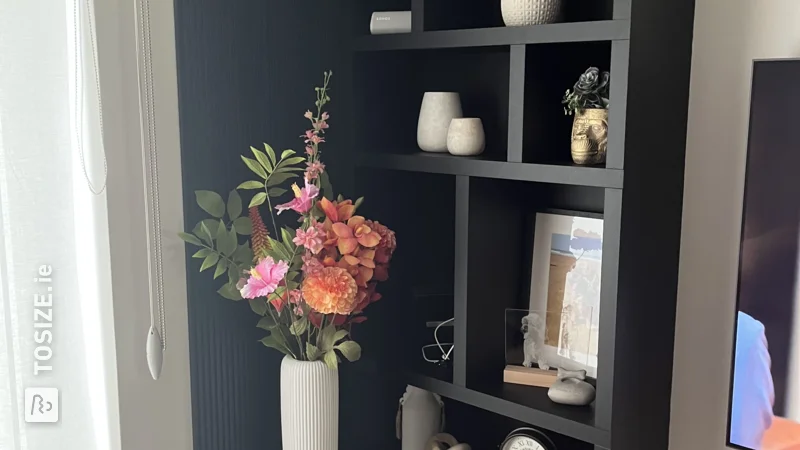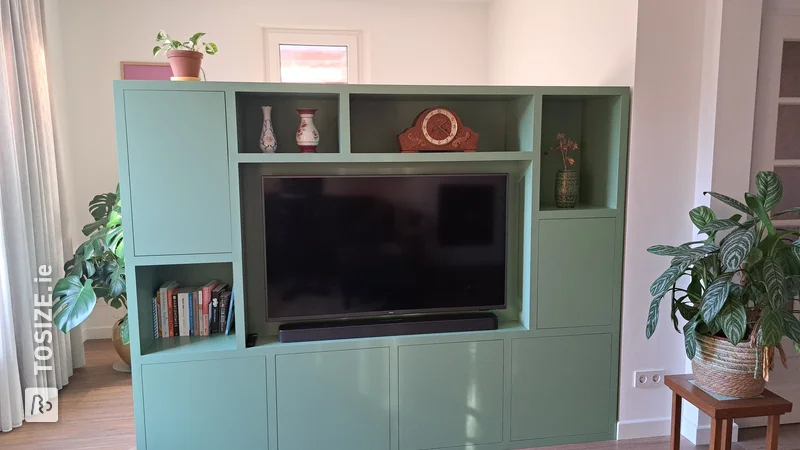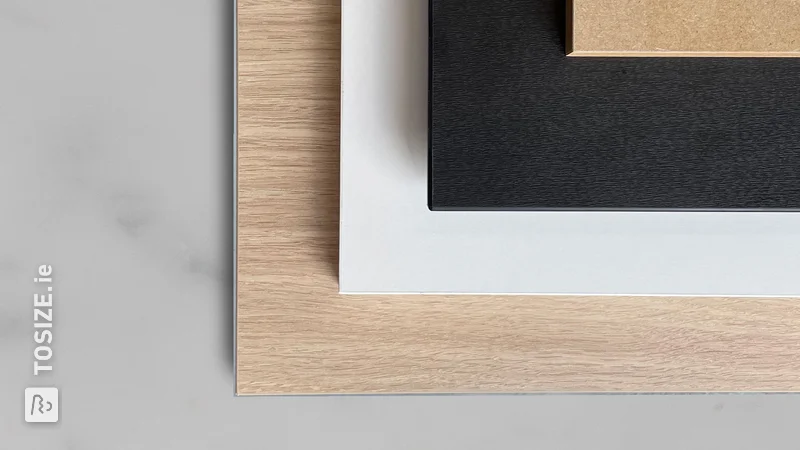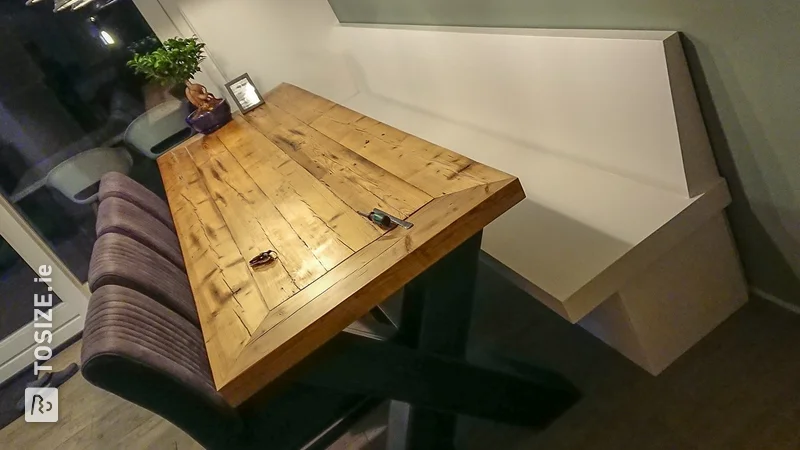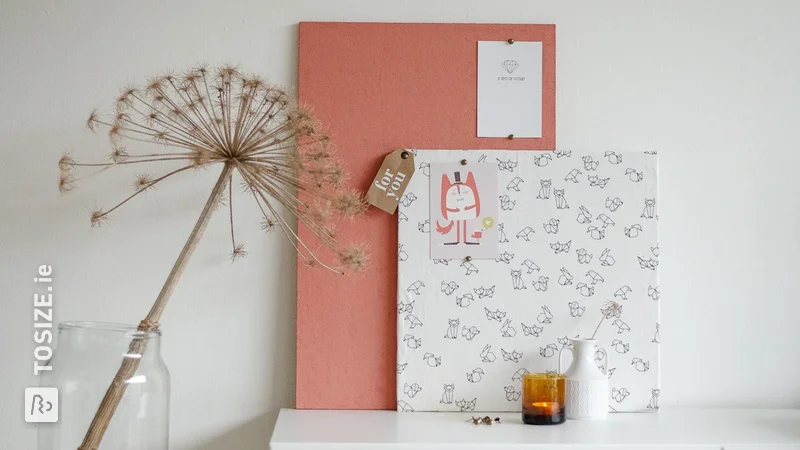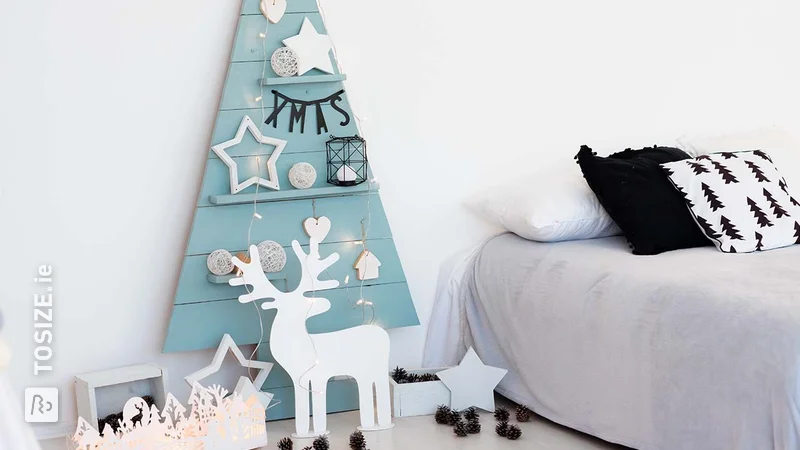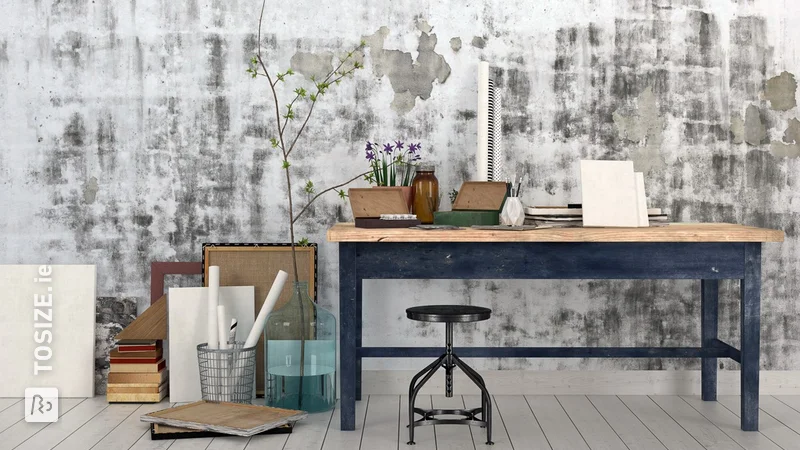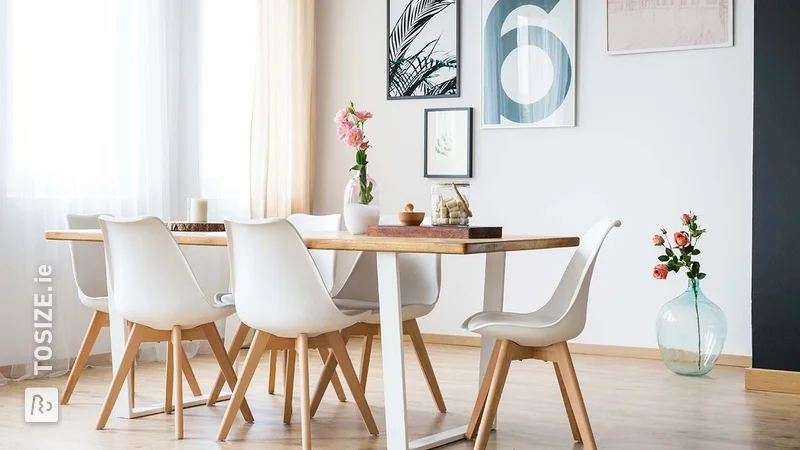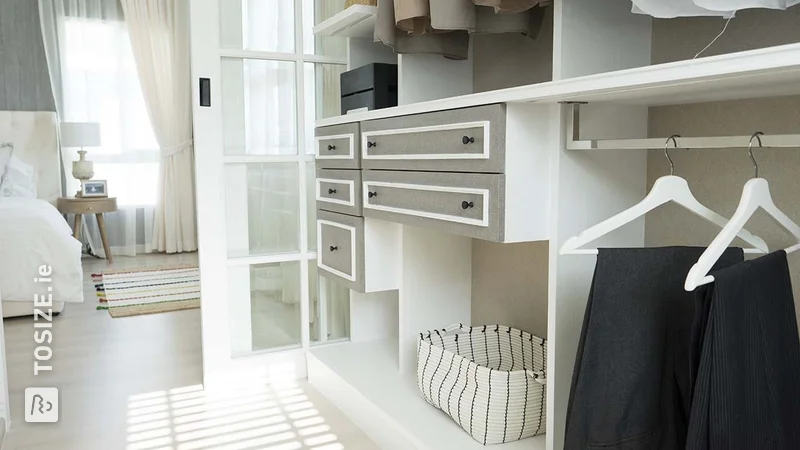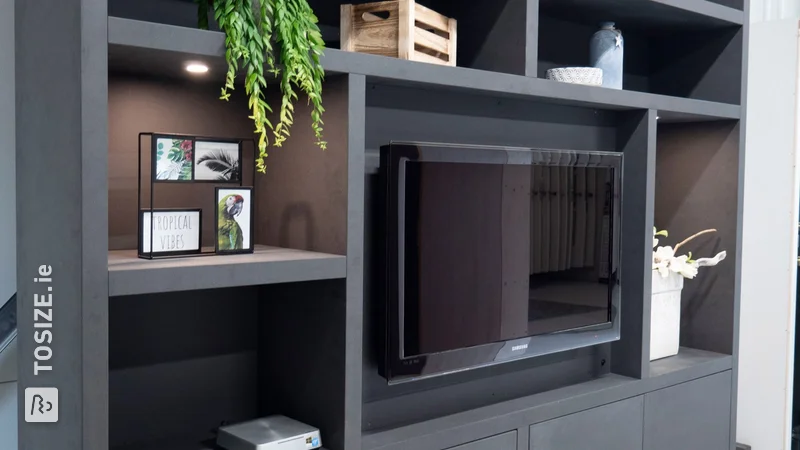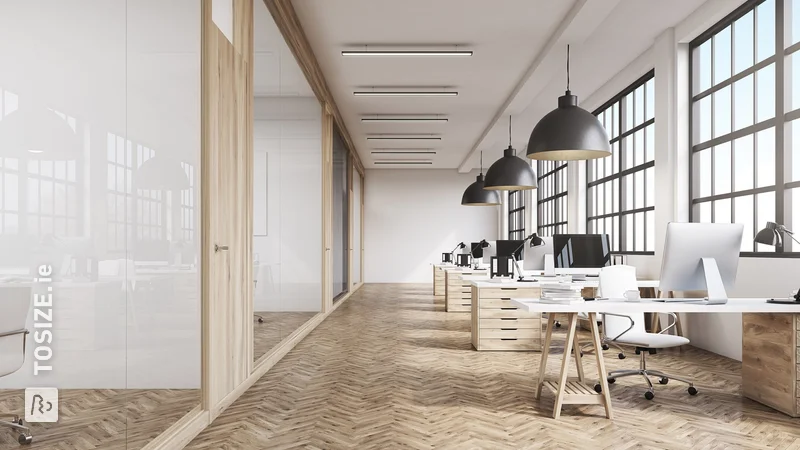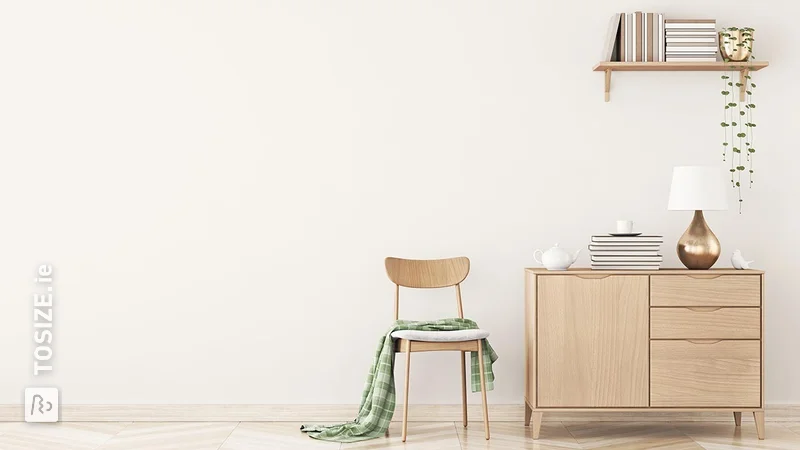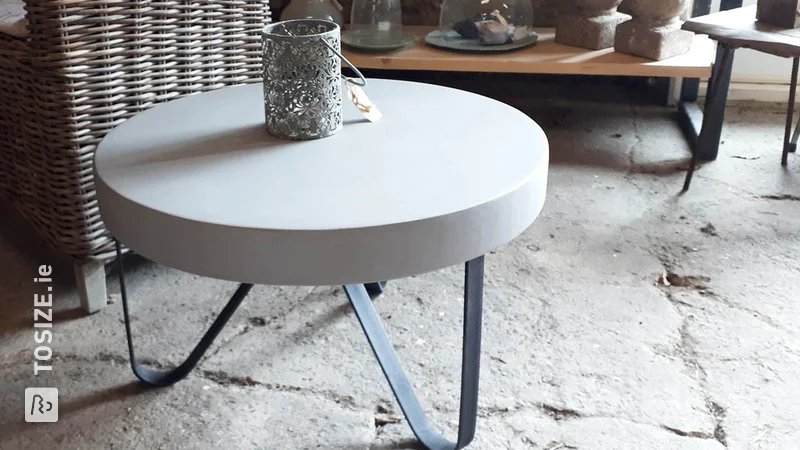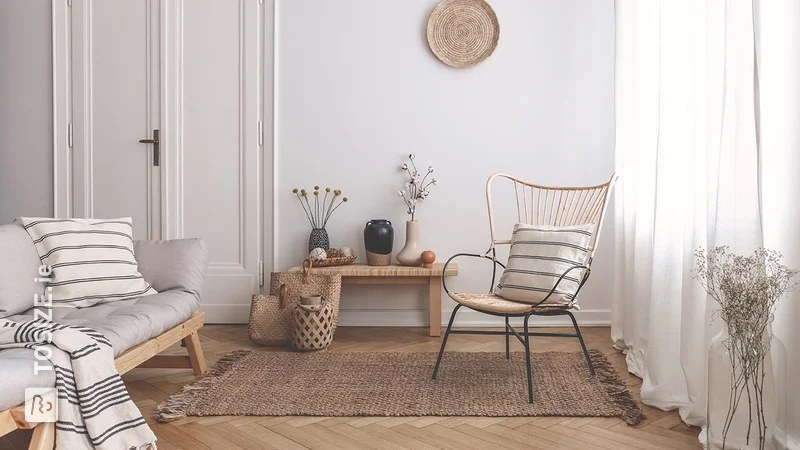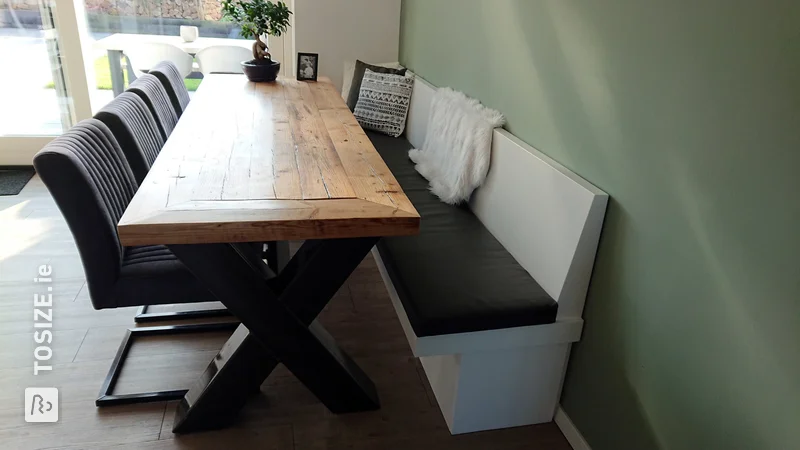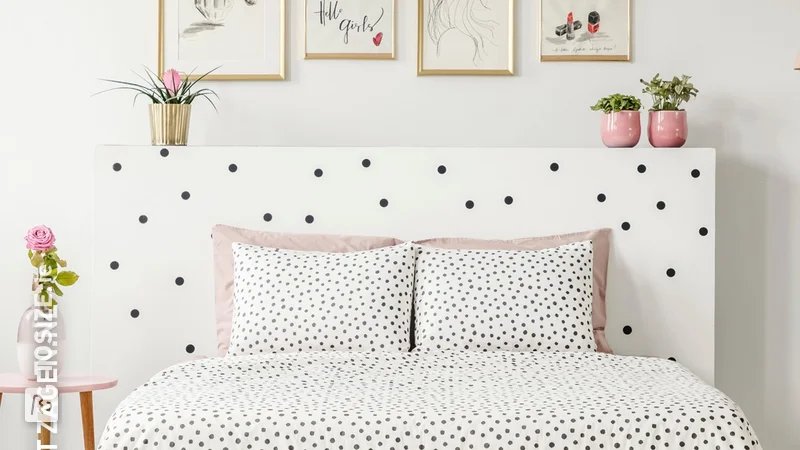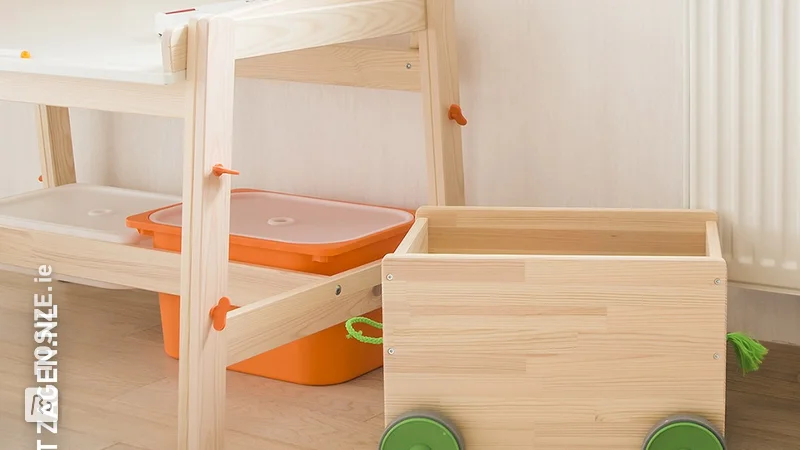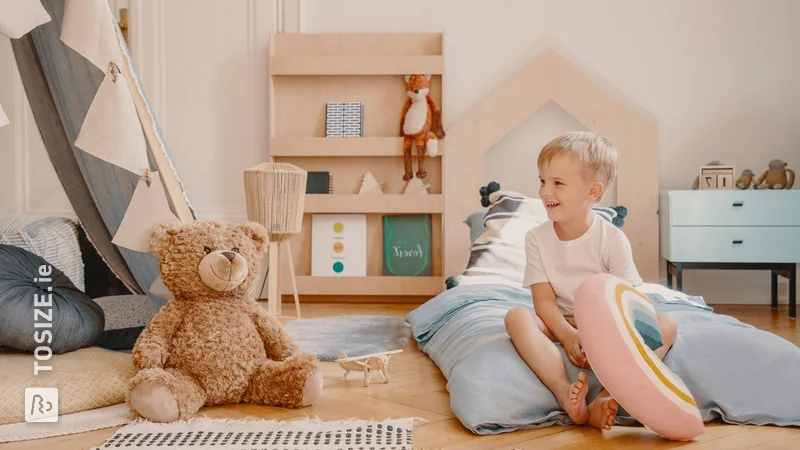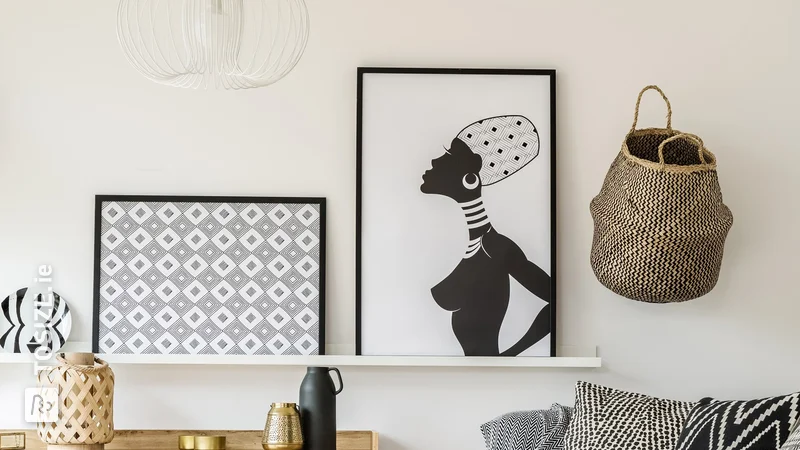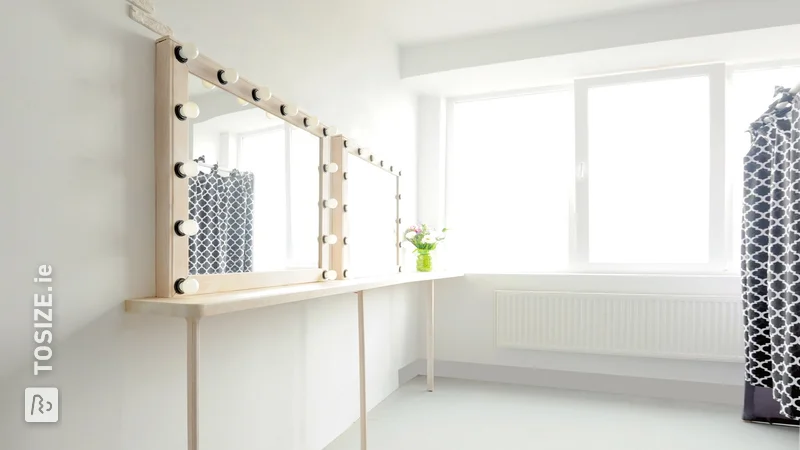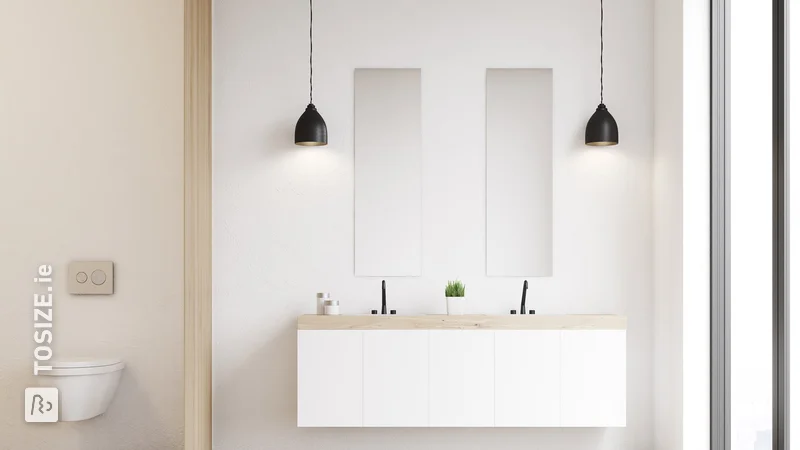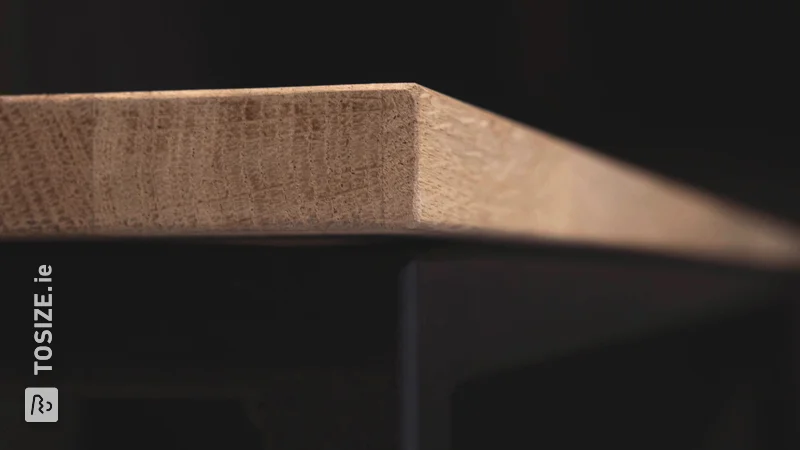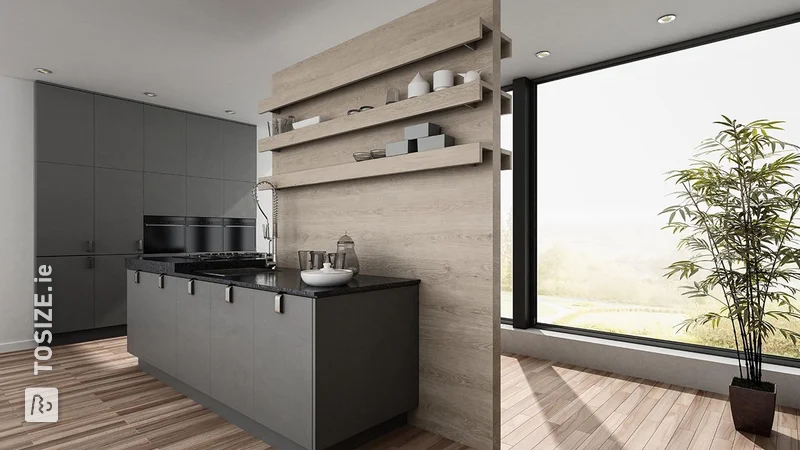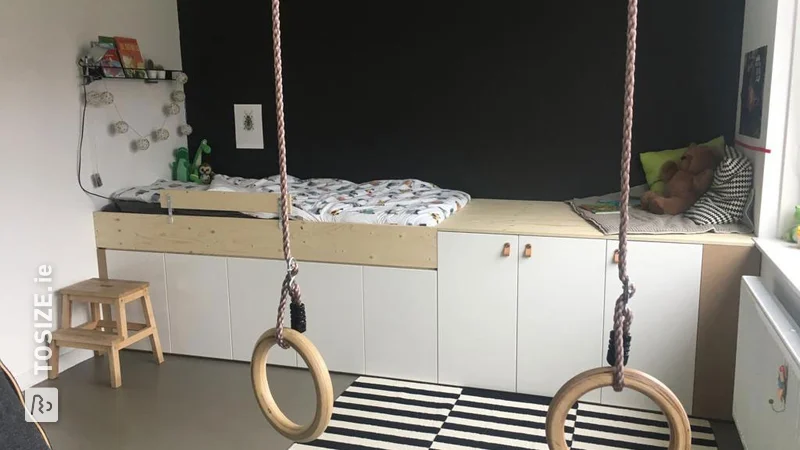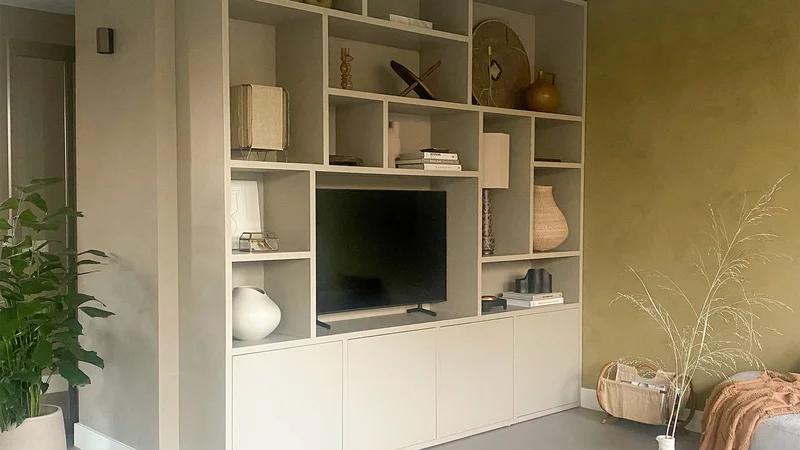Making your own washing machine cabinet
Want to make a washing machine enclosure yourself? With good preparation, you can create a piece of furniture that can go either way. At TOSIZE.ie, we are happy to help you cut the sheet material for this job perfectly to size. Find out exactly how to make a cut-to-size washing machine enclosure in this article!
ÎÎÎÎIn this article:
- How to make your own washing machine cabinet?
- What do you use a washer cabinet cut-to-size for?
- Can a washing machine go in a closet?
- What items do you need to make a washing machine cabinet?
- How to make a drawing for a washing machine cabinet?
- How deep is a washing machine cabinet?
- What wood do you use for a washing machine cabinet?
- Examples of cabinet for washing machine
- Getting started with your own cabinet
How to make your own washing machine cabinet?
Making your own washing machine cabinet is very convenient. It brings order and structure to your laundry room, bathroom, attic or wherever you keep your washing machine. It looks a lot neater, you get rid of unsightly plumbing, and it makes much better use of the empty space around your washing machine and tumble dryer.
When you make a washing machine cabinet, you can completely decide what it will look like. Maybe you just want a simple cabinet with a shelf to fold your laundry. Or do you want a cabinet with drawers and a tap and sink? It's your project, so your choice.
Whatever choices you make, in this article we will help you get started.
What do you use a washer cabinet cut-to-size for?
As we touched on above, you can make this DIY project as simple and complicated as you like. What do you want to use your washing machine cabinet for? Will you put just your washing machine in it or also your tumble dryer? And will they be next to each other or on top of each other?
Do you want a nice shelf on top to fold your laundry? Do you want to be able to store your detergents and fabric softener in a cabinet next to or above the cabinet? Maybe you want to combine your cabinet with a fridge, like one of our handymen did. Or will you go for a cabinet with space for a laundry basket?
Do you already know what your cabinet should look like?
Can a washing machine go in the a closet?
A common question is whether a washing machine can be put in a sealed cabinet. In principle, you can, but you have to make sure that the heat and water vapour can escape properly.
So, if you put your washing machine in a closed cabinet, make sure you ventilate the cabinet very well.
What items do you need to make a washing machine cabinet?
Time to get started on the cabinet for your washing machine or tumble dryer. Get the following items ready before you start your job:
- Graph paper, pencil, eraser, ruler: for drawing your DIY project
- Cordless drill: to easily pre-drill holes and screw screws into your material
- Wood glue: you may need it to glue several boards together
- Primer, edge sealer, lacquer: if you choose a type of wood to be finished, you will need primer, lacquer and possibly edge sealer
- Sandpaper: always handy to have with you to smooth away any unevenness or to neatly sand your drill holes
- Tape measure or folding ruler: to measure how big your washing machine cabinet should be
- Spirit level: a washing machine does not necessarily need to be level, but it can't hurt, of course
- Screws: to connect the various parts together, we recommend stainless steel screws in this case
How to make a drawing for a washing machine cabinet?
Before you really get started and order all the cut-to-size wood in our webshop, it is useful to make a drawing or sketch of your project. By now, you should have thought about what your washing machine furniture should look like, so you know whether you need to consider extra shelves or space for your laundry basket, for example.
You can make a sketch very easily with a pencil, eraser and graph paper. By sketching out your project, you force yourself to think carefully about each element of your washing machine cabinet.
One such element is the connection of the corners: how will you do that? Will you use corner anchors or screw the boards together directly? You can also choose to have us mitre-cut your boards. That way, you create beautiful, invisible joints. See our finishing options for more information.
Another important element is opening your drum. Make sure your design ensures that you can easily open the drum of your washing machine. If you build your washing machine too deep, you may not be able to open your drum far enough. And that would be a shame.
Finally, work out your sketch so that you know the exact measurements of all your materials. Using this list, you can order your sheet material in our web shop. This way, you don't have to saw your wood at home: that's a big difference!
Tip: you can mark each board with the label of your choice when you place your order. That way, once your wood is delivered to your home, you will know exactly which board belongs where in your design.
Provide a stable surface
When designing, also consider the bottom of your enclosure. Will you simply put the washing machine on the floor or will you make an elevation? In any case, it is important that your washing machine is stable, on a straight surface. You don't want your washing machine to ‘walk’ during spinning and your entire enclosure to shake apart.
You can create that stable surface, for example, by placing some sturdy beams under your washing machine, as handyman Kim did in her washing machine project.
How do you level a washing machine?
- Use a spirit level - Place it on the top of the machine (left to right and front to back).
- Adjust the legs - Most washing machines have adjustable legs at the bottom. Turn these in or out until the machine is stable.
- Check stability - Gently push against the machine to test whether it stands firmly.
- Use a non-slip mat (optional) - This helps reduce vibrations.
A correctly leveled washing machine ensures a longer life and less noise pollution!
How deep is a washing machine cabinet?
Most washing machines and tumble dryers have standard sizes. Those sizes are 60.0 cm for the width and 85.0 for the height. Their depth varies by model, but is usually between 70.0 and 80.0 cm.
So before you start your project, it is advisable to measure your washer and dryer properly. While doing so, at the back also take into account the supply and drainage hoses and other protruding elements.
What wood do you use for a washing machine cabinet?
You can use different sheet materials for a washing machine cabinet. Each material has its own typical qualities. Make sure that the wood of your choice is resistant to moisture. Or impregnate it yourself to make it moisture-resistant.
Among our handymen, we often see for a washing machine cabinet the use of MDF, underlayment, plywood and timber panels.
Plywood
Plywood is a beautiful, versatile board that is easy to work with. Ideal for making furniture, cabinet and a cabinet for the washing machine. In our range, you will find plywood variants that are suitable for damp rooms, provided they are treated.
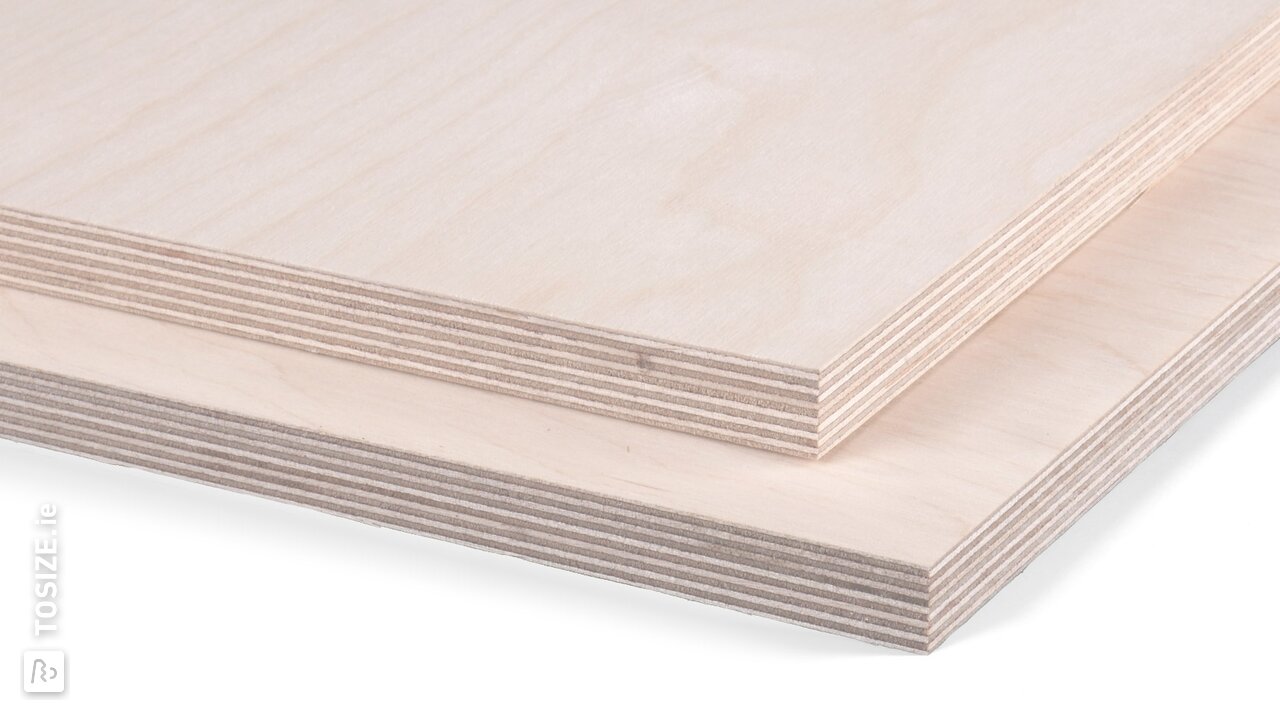
Underlayment
While underlayment was once only used as underlayment, this strong board material with spruce veneer is now all the rage for more decorative applications. Although the bonding is moisture-resistant, the wood itself is not protected. Therefore, we do not recommend underlayment for use in damp rooms, unless you treat it with an impregnating agent. Underlayment gives a beautiful individual character to your cabinet!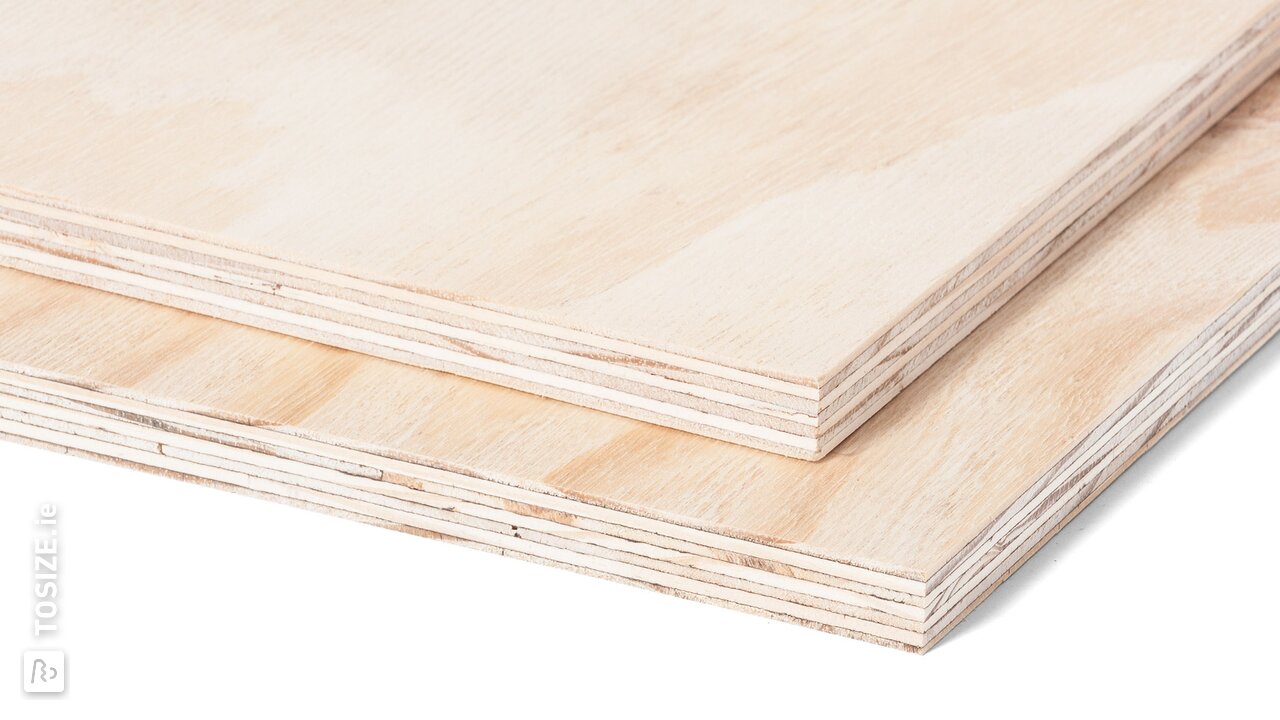
Moisture-resistant MDF
MDF boards are just about the most versatile board materials available. It is available in a huge number of variants and is easy to work with. MDF does not splinter. You will also find water-resistant MDF boards in our range. This is of course advisable in a wet room.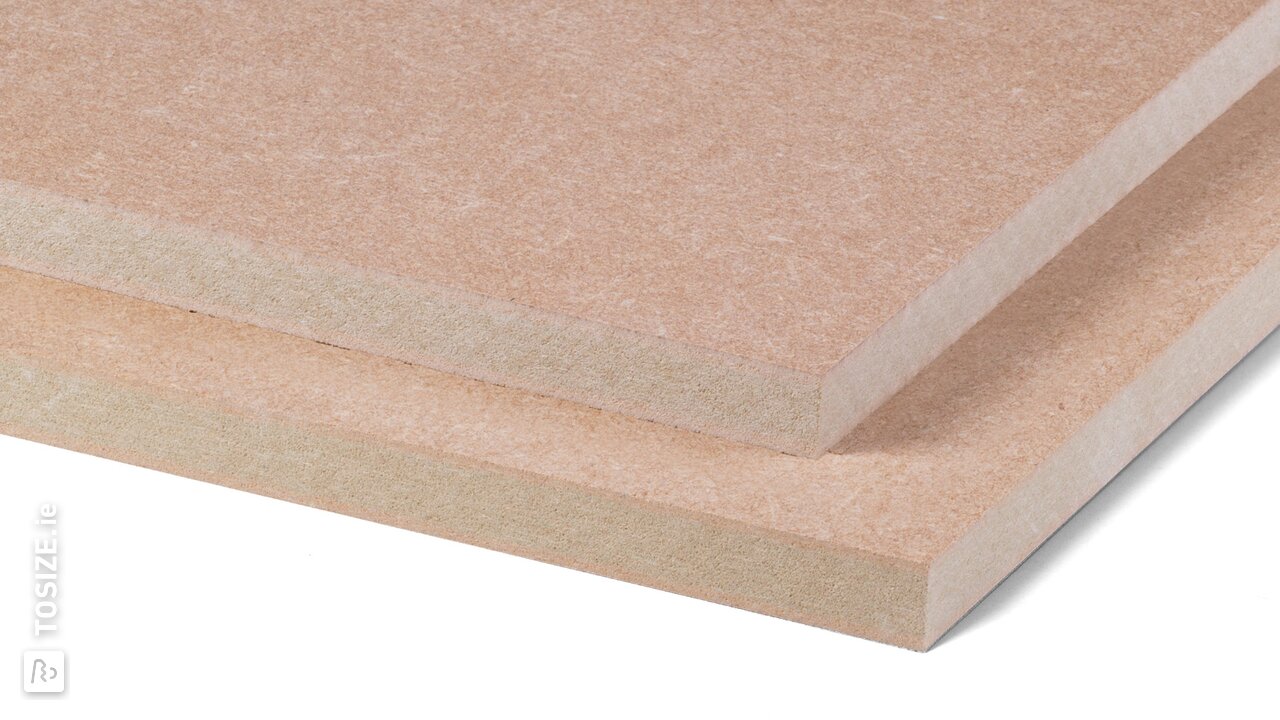
Timber panel
Timberboards are great for making furniture, as well as a cabinet for the washing machine. A joinery panel is made of solid wood, which gives a warm and natural look. Do check carefully in our range which variants are moisture-resistant.
Phenolic Plywood
If you want a cabinet with a completely different look, you can also choose a sheet material like phenolic plywood. Phenolic Plywood consists of plywood with a special plastic layer (phenol) on the top and bottom. This is a very smooth and waterproof layer. It gives your washing machine cabinet a completely different look.
When using phenolic plywood, do make sure you treat the end edges well with an edge sealer.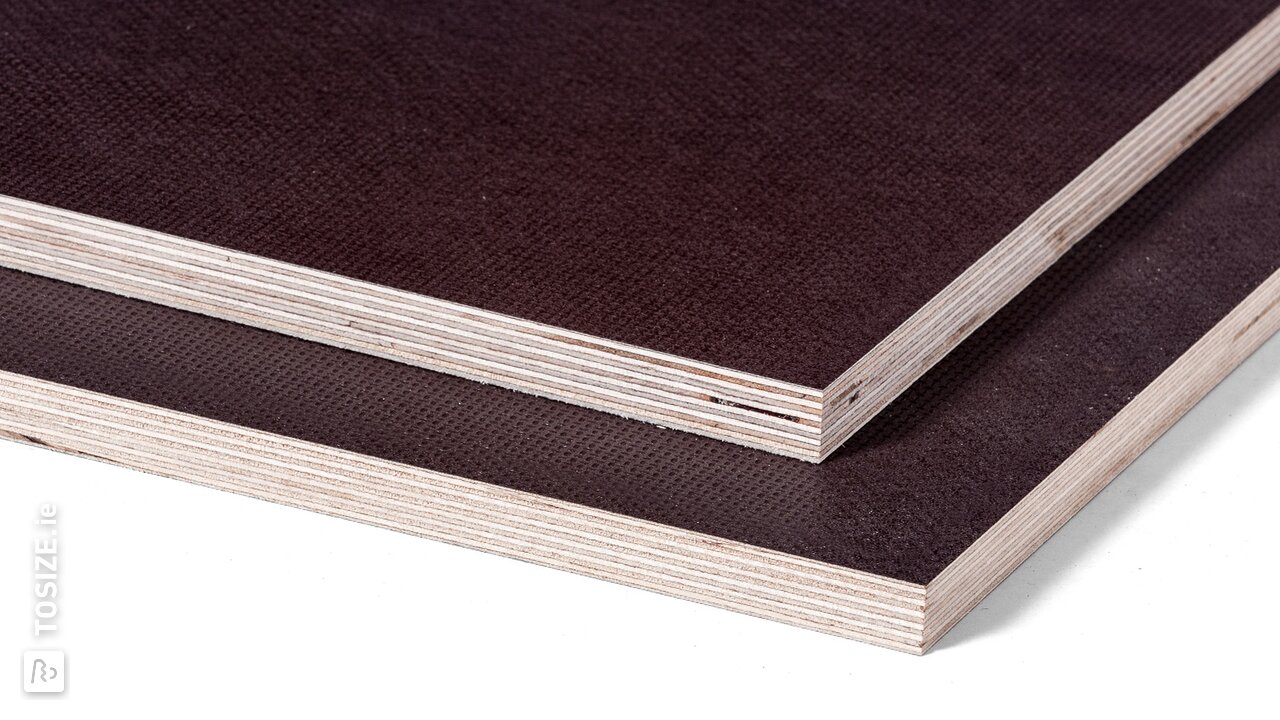
Examples of Washing Machine Enclosures
Our DIY enthusiasts have set a good example and have gotten to work on a washing machine enclosure. We're happy to share the results with you here. Perhaps it will give you a good idea for your own project.
Jaco made this enclosure from pine timber panels in his kitchen. Stefan used underlayment for his washing machine enclosure and made a handy compartment next to it for detergent and other items.
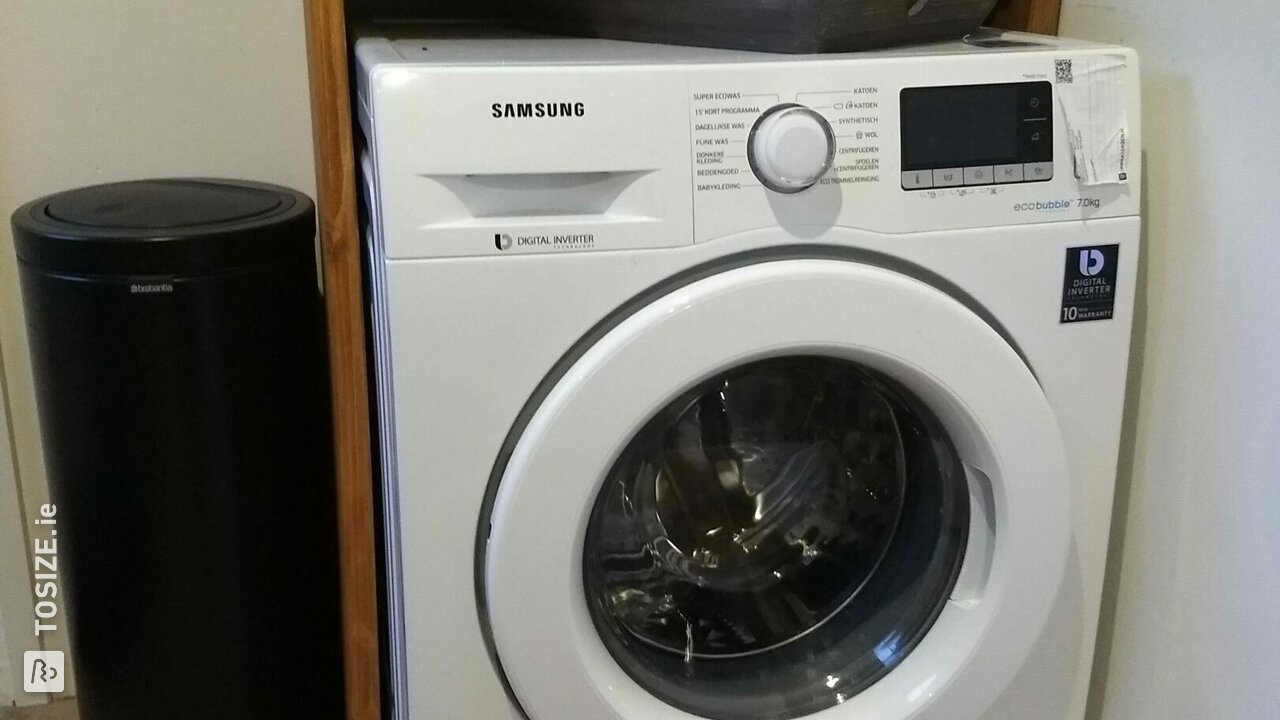
Kim shows us that you can also make a whole cabinet for children's items next to your washing machine and dryer enclosure. She used birch plywood to make a nice cabinet with doors next to the washing machine.
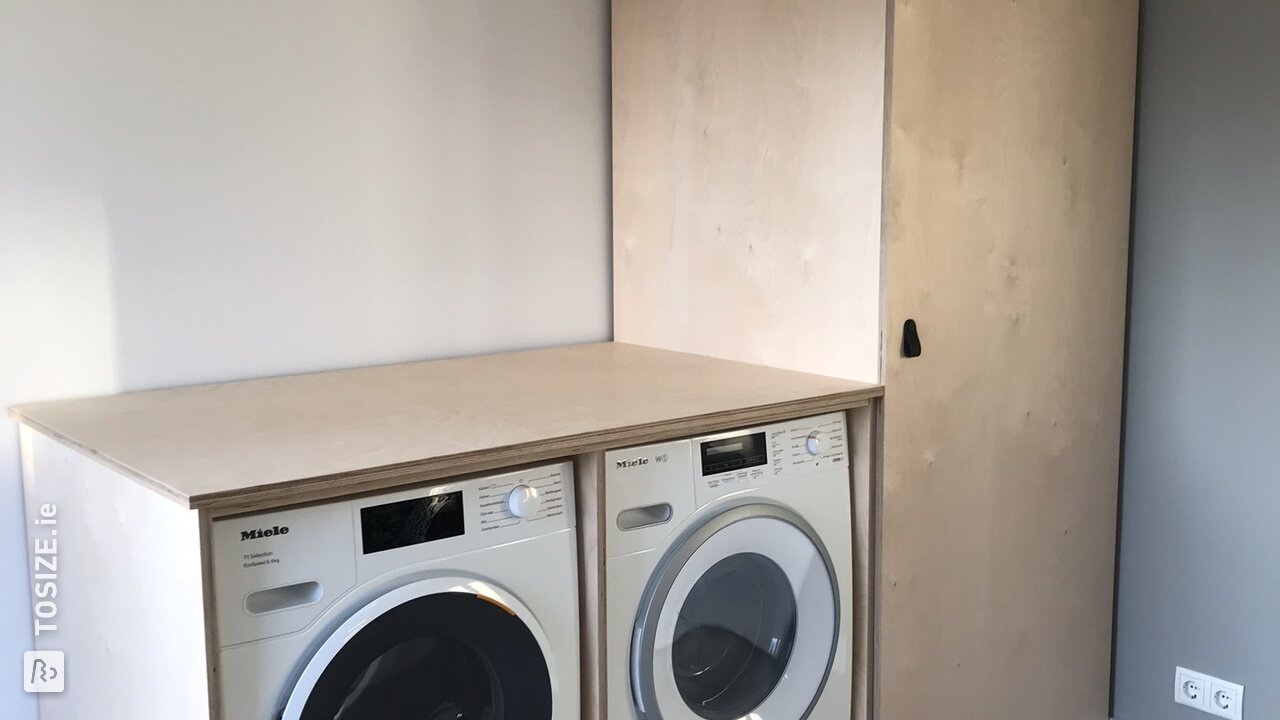
Simple can also be beautiful: Nick attached three oak timber panels together with corner connections. He finished his enclosure nicely with transparent oil. Also simple but functional is this project by Arjaan, who used underlayment for an enclosure. Here's another project where underlayment was used.
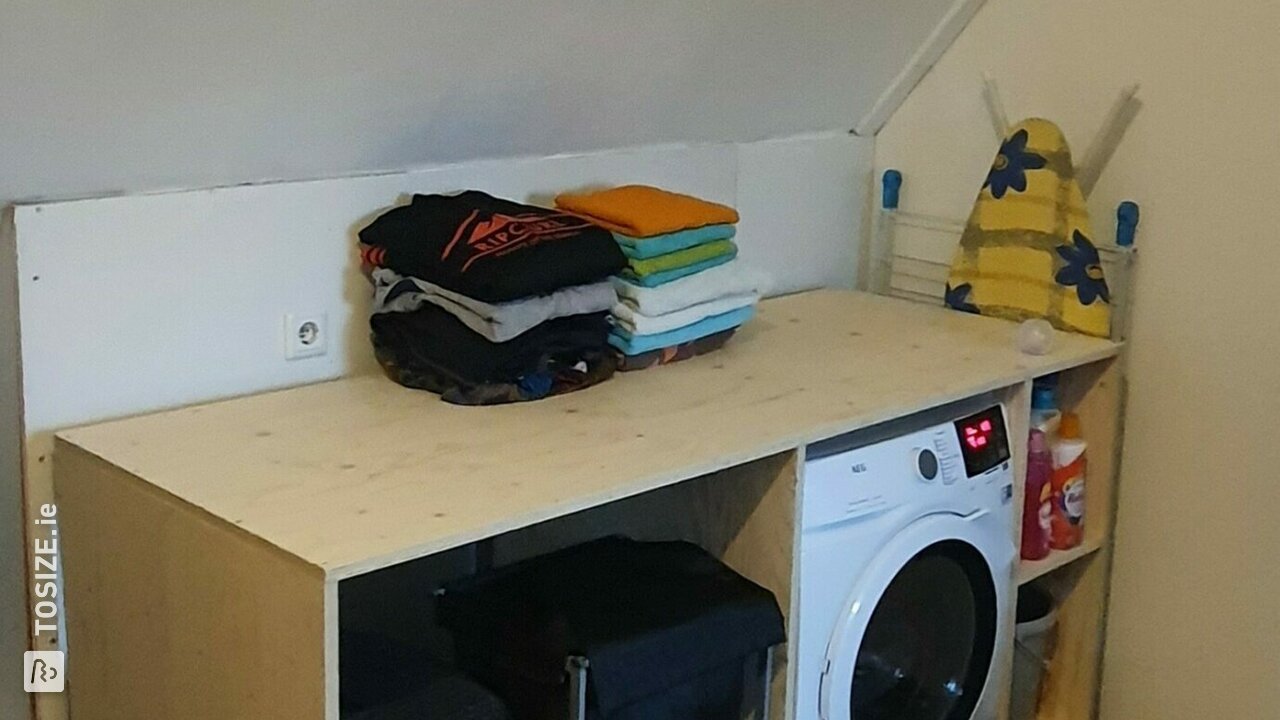
Dion is making an enclosure with MDF panels and is beautifully integrating the washing machine and dryer under the sloping roof.
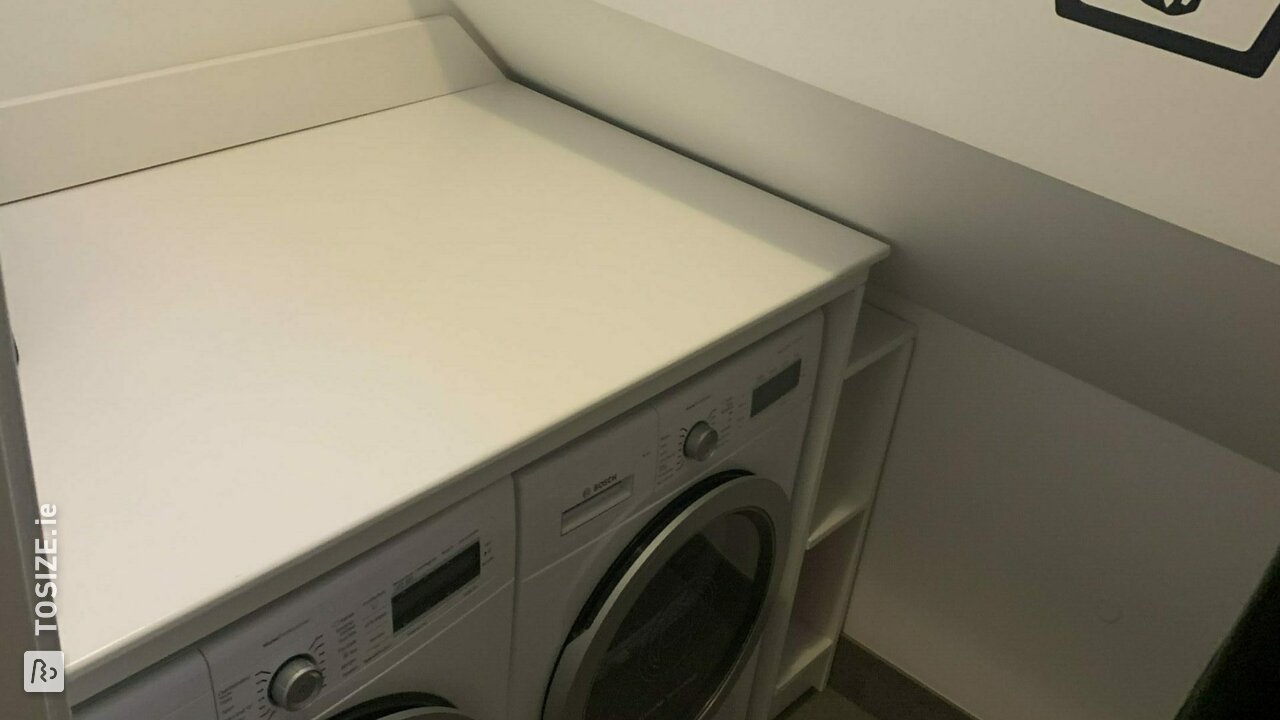
For the DIY enthusiasts who want to make their enclosure something really special, we have the examples of Michael and Roel. Michael made a washing machine enclosure and combined it with three nicely hung cabinet doors. Roel went a step further and built an enclosure with space for 2 drawers, a sink, and a faucet.
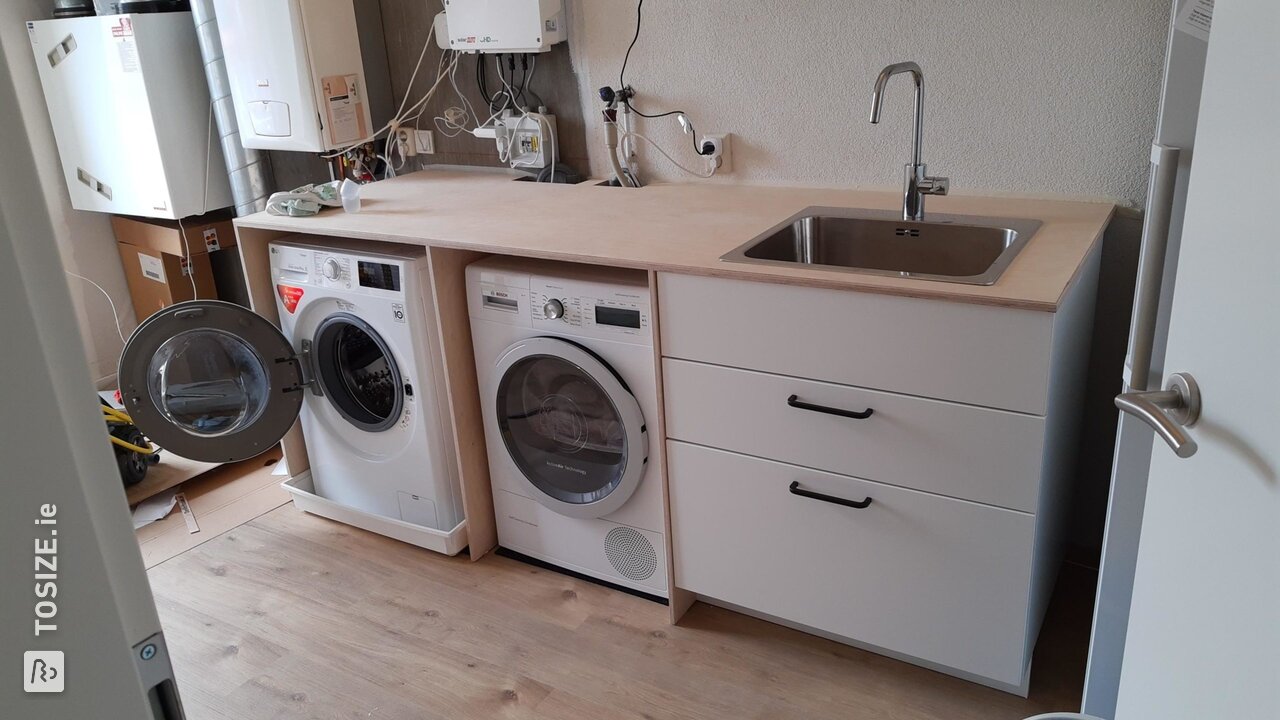
Get Started on Your Own Enclosure
If you want to get started on an enclosure for your washing machine or dryer yourself, we hope the tips in this article will help you along the way.
In our webshop, you can have the required sheet material for your project cut to the millimeter precision. That saves you a lot of work, blunt saws, and sawdust. Easy peasy!
Finally, a tip, as Dion mentions in his project: "Next time we'll order everything in primed MDF, because that really saves a lot of work." Just passing it along.
Good luck with making your own washing machine enclosure!
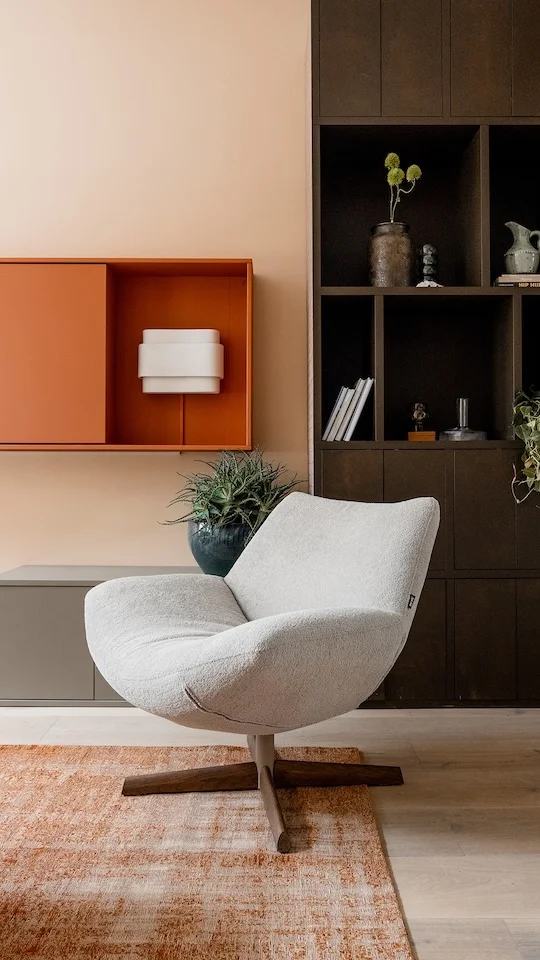

Also check out these similar DIY tips
